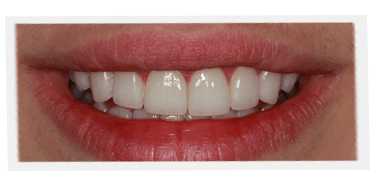
Dentistry has come a long way in the last 100 years. In my book, A Guide to the Perfect Smile, I cover the events that led to the dental (and smile) revolution upon us. Today’s patients see more, learn more, and know more when it comes to getting the best dental treatments possible, whether it’s porcelain veneers, whitening, dental bridges, or implants. The only thing stopping them from achieving the smile of their dreams is finding the right dentist.
Enjoy this piece from me, to you.
“Today’s gap between patients and dentist can be traced in part to the evolution of the dentistry itself. Only one hundred years ago, dentist were right in there with barbers and blacksmiths in terms of their development. Dentists lacked definition or understanding of processes. They were operating by the seat of their pants.
Within those ten decades, however, dentistry moved light years ahead. All scientists and scientific practitioners depend on their ability to define the unexplained, and dentistry proved to excel in this ability. As the profession developed, dentists began to learn that there were different types of holes in teeth and different ways to fix them. That was good because patients began to get used to different types of problems and the solutions available for them.
Not only did this give patients comfort, but it also gave dentists as a professional body ways to confer on problems and solutions. Being able to agree that a certain type of cavity was class 1 or class 2, and so on, allowed them to come up with more nuanced diagnoses and treatments.
So, as a result, cavities became classified and dentists were able to develop better ways to treat patients and speak to them about the pros and cons and limitations of any treatment.
Periodontal surgery had a similar development. After a while, periodontists, who deal with gum disease, realized that there were different levels and stages of this disease. Again, class 1 and class 2 designations, for example, were developed to help these dentists develop their ideas and treatments and to help patients understand the diagnosis and treatment of their problem.
The same was true of orthodontists. Their craft was to straighten teeth, but there was crooked and there was crooked. They needed language to say to a patient, “You’ve got an overbite, underbite, or crossbite.” So names were given for occlusions: class 1, class 2 and class 3. Orthodontists went on to develop subdivisions within these classes.
But the challenge of definition was greater in the newest area of dentistry, smile dentistry. It was extremely difficult for dentists to discuss these problems and solutions with patients or other dentists. For a while, the health of the teeth, not the health of the smiles, was being analyzed. There was no definition of the smile that took the underlying reality of smiles – the rest of the face – into account. Patients could leave a dental examination knowing they had healthy teeth. But as for whether they had a healthy smile – both they and their dentists were at a loss. If you had asked patients, “Did your dentist check your smile?” the answer probably would have been, “I don’t know. I’m not really sure.”
The most fundamental question was, who was fixing smiles? The cosmetic companies claimed some responsibility, with their lipstick advertisements showing women with gorgeous smiles. Plastic surgeons were beginning to beautify lips by making them thicker, but they didn’t really fix smiles unless they were dealing with patients who had been in car accidents or needed a surgical procedure.
So patients turned most often to their dentist. And dentist, true to their solid history in this regard, began to think through what they needed to do to fix smiles. To that point they were treating all smiles as essentially the same. They were fixing teeth. They hoped that great teeth would automatically result in great smiles. But I quickly realized that people don’t all smile the same way and therefore that fixing patients’ teeth that same way would not necessarily result in good smiles for them. The smile would not really come to dentistry, however, until certain demographic and economic realities played themselves out.”



